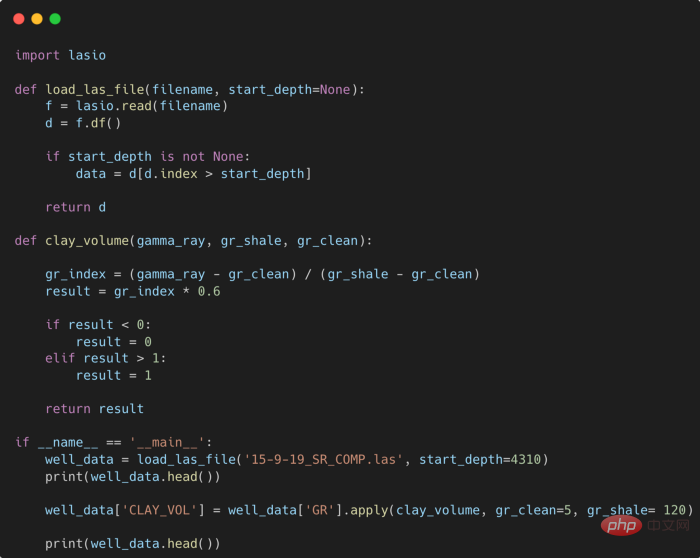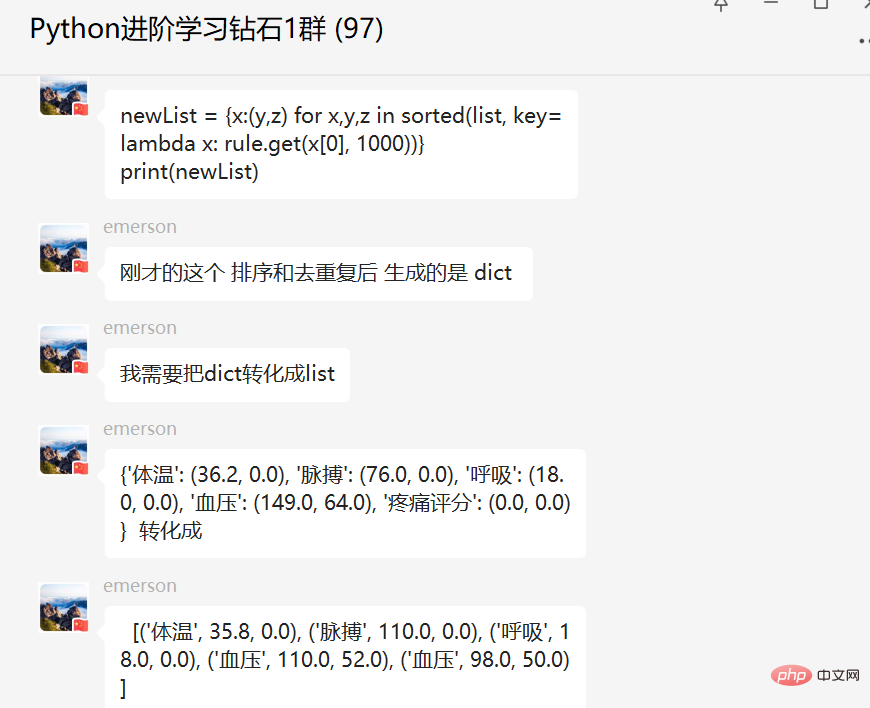Detailed Examples of PHP File Processing Functions
With the development of the Internet and the continuous expansion of applications, PHP, as a programming language widely used in Web development, has also received more and more attention and attention. . In the PHP language, file processing is a very common and important task, so proficiency in file processing functions is also one of the essential skills for web developers. In this article, we will provide detailed examples of PHP file processing functions to help everyone better understand and master this part of knowledge.
1. File reading function
- file_get_contents()
The file_get_contents() function can read the file content into a string, which is very convenient . The sample code is as follows:
$file_content = file_get_contents('test.txt');
echo $file_content;The above code will read the content in test.txt and output it to the screen.
- file()
The file() function is similar to the file_get_contents() function, except that it will read the file contents into an array, each line Represents an element. The sample code is as follows:
$file_lines = file('test.txt');
foreach ($file_lines as $line) {
echo $line;
}The above code will read the content in test.txt and output it to the screen line by line.
- fread()
The fread() function can read the file content of the specified length. The sample code is as follows:
$handle = fopen('test.txt', 'r');
$file_content = fread($handle, 100);
echo $file_content;
fclose($handle);The above code will open the test.txt file, read the first 100 bytes of content, and output it to the screen. It should be noted that after reading the file content, you need to use the fclose() function to close the file handle.
2. File writing function
- file_put_contents()
The file_put_contents() function is one of the common functions for file writing operations. It can The specified content is appended to the end of the file. The sample code is as follows:
$file_content = "Hello, World!";
file_put_contents('test.txt', $file_content, FILE_APPEND);The above code will append the "Hello, World!" string to the test.txt file.
- fwrite()
The fwrite() function can directly write the specified content to the file. The sample code is as follows:
$handle = fopen('test.txt', 'w');
fwrite($handle, "Hello, World!");
fclose($handle);The above code will create a handle, write the "Hello, World!" string to the test.txt file, and close the file handle.
3. File operation function
- copy()
The copy() function can copy one file to another file. The sample code is as follows:
$source_file = 'test.txt';
$dest_file = 'test_copy.txt';
if (copy($source_file, $dest_file)) {
echo "Copy file success!";
} else {
echo "Copy file fail!";
}The above code will copy the test.txt file to the test_copy.txt file and output "Copy file success!".
- rename()
The rename() function can rename the specified file or directory to another name. The sample code is as follows:
$old_name = 'test.txt';
$new_name = 'test_new.txt';
if (rename($old_name, $new_name)) {
echo "Rename file success!";
} else {
echo "Rename file fail!";
}The above code will rename the test.txt file to test_new.txt and output "Rename file success!".
4. File attribute function
- file_exists()
The file_exists() function can check whether the specified file or directory exists. The sample code is as follows:
$file_name = 'test.txt';
if (file_exists($file_name)) {
echo $file_name." exists!";
} else {
echo $file_name." not exists!";
}The above code will check whether the test.txt file exists and output the corresponding results.
- filesize()
The filesize() function can get the size of the specified file in bytes. The sample code is as follows:
$file_name = 'test.txt'; $file_size = filesize($file_name); echo "File size:".$file_size." bytes";
The above code will get the size of the test.txt file and output the corresponding results.
To sum up, in Web development, file processing is an indispensable part, and mastering the file processing functions in PHP is undoubtedly very beneficial. Through the detailed examples in this article, I believe that everyone has a deeper understanding and understanding of these functions.
The above is the detailed content of Detailed explanation of PHP file processing function examples. For more information, please follow other related articles on the PHP Chinese website!
 提高 Python 代码可读性的五个基本技巧Apr 12, 2023 pm 08:58 PM
提高 Python 代码可读性的五个基本技巧Apr 12, 2023 pm 08:58 PMPython 中有许多方法可以帮助我们理解代码的内部工作原理,良好的编程习惯,可以使我们的工作事半功倍!例如,我们最终可能会得到看起来很像下图中的代码。虽然不是最糟糕的,但是,我们需要扩展一些事情,例如:load_las_file 函数中的 f 和 d 代表什么?为什么我们要在 clay 函数中检查结果?这些函数需要什么类型?Floats? DataFrames?在本文中,我们将着重讨论如何通过文档、提示输入和正确的变量名称来提高应用程序/脚本的可读性的五个基本技巧。1. Comments我们可
 CRPS:贝叶斯机器学习模型的评分函数Apr 12, 2023 am 11:07 AM
CRPS:贝叶斯机器学习模型的评分函数Apr 12, 2023 am 11:07 AM连续分级概率评分(Continuous Ranked Probability Score, CRPS)或“连续概率排位分数”是一个函数或统计量,可以将分布预测与真实值进行比较。机器学习工作流程的一个重要部分是模型评估。这个过程本身可以被认为是常识:将数据分成训练集和测试集,在训练集上训练模型,并使用评分函数评估其在测试集上的性能。评分函数(或度量)是将真实值及其预测映射到一个单一且可比较的值 [1]。例如,对于连续预测可以使用 RMSE、MAE、MAPE 或 R 平方等评分函数。如果预测不是逐点
 详解JavaScript函数如何实现可变参数?(总结分享)Aug 04, 2022 pm 02:35 PM
详解JavaScript函数如何实现可变参数?(总结分享)Aug 04, 2022 pm 02:35 PMjs是弱类型语言,不能像C#那样使用param关键字来声明形参是一个可变参数。那么js中,如何实现这种可变参数呢?下面本篇文章就来聊聊JavaScript函数可变参数的实现方法,希望对大家有所帮助!
 盘点Python内置函数sorted()高级用法实战May 13, 2023 am 10:34 AM
盘点Python内置函数sorted()高级用法实战May 13, 2023 am 10:34 AM一、前言前几天在Python钻石交流群有个叫【emerson】的粉丝问了一个Python排序的问题,这里拿出来给大家分享下,一起学习下。其实这里【瑜亮老师】、【布达佩斯的永恒】等人讲了很多,只不过对于基础不太好的小伙伴们来说,还是有点难的。不过在实际应用中内置函数sorted()用的还是蛮多的,这里也单独拿出来讲一下,希望下次再有小伙伴遇到的时候,可以不慌。二、基础用法内置函数sorted()可以用来做排序,基础的用法很简单,看个例子,如下所示。lst=[3,28,18,29,2,5,88
 学Python,还不知道main函数吗Apr 12, 2023 pm 02:58 PM
学Python,还不知道main函数吗Apr 12, 2023 pm 02:58 PMPython 中的 main 函数充当程序的执行点,在 Python 编程中定义 main 函数是启动程序执行的必要条件,不过它仅在程序直接运行时才执行,而在作为模块导入时不会执行。要了解有关 Python main 函数的更多信息,我们将从如下几点逐步学习:什么是 Python 函数Python 中 main 函数的功能是什么一个基本的 Python main() 是怎样的Python 执行模式Let’s get started什么是 Python 函数相信很多小伙伴对函数都不陌生了,函数是可
 Python面向对象里常见的内置成员介绍Apr 12, 2023 am 09:10 AM
Python面向对象里常见的内置成员介绍Apr 12, 2023 am 09:10 AM好嘞,今天我们继续剖析下Python里的类。[[441842]]先前我们定义类的时候,使用到了构造函数,在Python里的构造函数书写比较特殊,他是一个特殊的函数__init__,其实在类里,除了构造函数还有很多其他格式为__XXX__的函数,另外也有一些__xx__的属性。下面我们一一说下:构造函数Python里所有类的构造函数都是__init__,其中根据我们的需求,构造函数又分为有参构造函数和无惨构造函数。如果当前没有定义构造函数,那么系统会自动生成一个无参空的构造函数。例如:在有继承关系
 Golang函数的类型断言用法介绍May 16, 2023 am 08:02 AM
Golang函数的类型断言用法介绍May 16, 2023 am 08:02 AMGolang的函数类型断言是一个非常重要的特性,它可以让我们在函数中精细地控制变量的类型,从而更加方便地进行数据处理和转换。本文将介绍Golang函数的类型断言用法,希望能够对大家的学习有所帮助。一、什么是Golang函数的类型断言?Golang函数的类型断言可以理解为函数参数中所声明变量的类型具有多态性,这使得一个函数在不同的参数传递下可以灵活
 Python编程:有关函数返回值以及最佳实践基本指导原则Apr 10, 2023 am 11:31 AM
Python编程:有关函数返回值以及最佳实践基本指导原则Apr 10, 2023 am 11:31 AM本篇内容作为以函数为主题的最后一篇,来介绍一下函数返回值以及编写函数的一些基本的最佳实践指导原则。函数输出:返回值函数的返回值是Python领先于竞争对手的东西之一。在大多数其他语言中,函数通常只允许返回一个对象,但是在Python中,你可以返回一个元组——这意味着可以返回任何你想要的东西。这个特性允许程序员编写用其他语言编写的软件要困难得多,或者肯定会更加乏味。我们已经说过,要从函数返回一些东西,我们需要使用return语句,后面跟着我们想要返回的东西。函数体中可以根据需要有多个返回语句。另一


Hot AI Tools

Undresser.AI Undress
AI-powered app for creating realistic nude photos

AI Clothes Remover
Online AI tool for removing clothes from photos.

Undress AI Tool
Undress images for free

Clothoff.io
AI clothes remover

AI Hentai Generator
Generate AI Hentai for free.

Hot Article

Hot Tools

VSCode Windows 64-bit Download
A free and powerful IDE editor launched by Microsoft

SublimeText3 Mac version
God-level code editing software (SublimeText3)

EditPlus Chinese cracked version
Small size, syntax highlighting, does not support code prompt function

MantisBT
Mantis is an easy-to-deploy web-based defect tracking tool designed to aid in product defect tracking. It requires PHP, MySQL and a web server. Check out our demo and hosting services.

mPDF
mPDF is a PHP library that can generate PDF files from UTF-8 encoded HTML. The original author, Ian Back, wrote mPDF to output PDF files "on the fly" from his website and handle different languages. It is slower than original scripts like HTML2FPDF and produces larger files when using Unicode fonts, but supports CSS styles etc. and has a lot of enhancements. Supports almost all languages, including RTL (Arabic and Hebrew) and CJK (Chinese, Japanese and Korean). Supports nested block-level elements (such as P, DIV),






